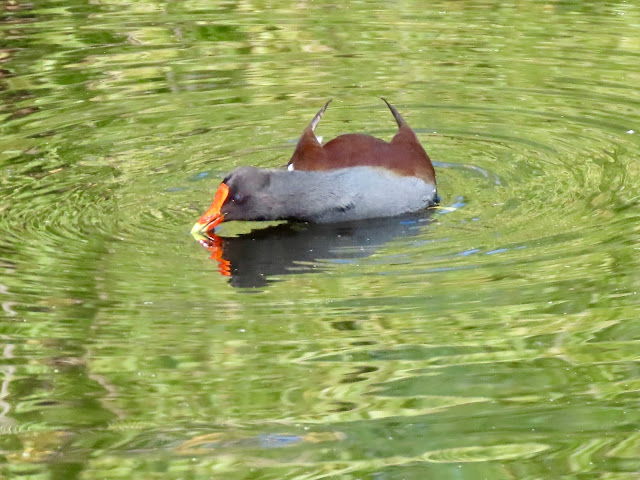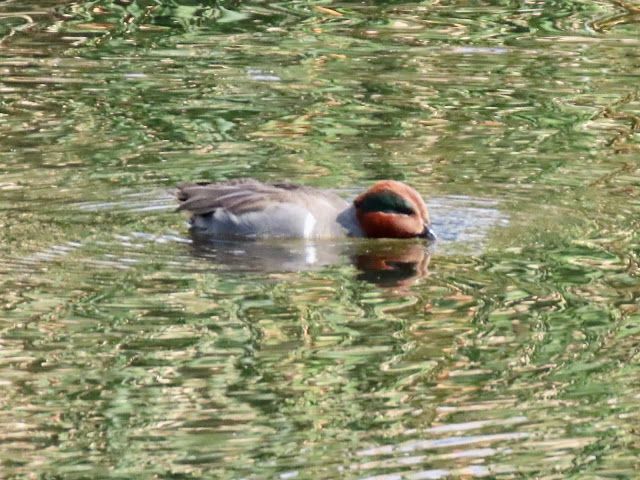Sunday, November 8, 2020
Due to road construction blocking our usual entrance to Sweetwater Wetlands in Tucson, it was 9 a.m. before we began birding there.
We would be looking for two rare birds for this area: TENNESSEE WARBLER and NORTHERN PARULA. Starting where they had been reported, we didn't find either but a GREEN HERON was startled up from the stream beside the cottonwoods. We found it a bit later perching high on utility wires beside the small parking lot. It appears to be a first-summer bird still with a striped neck and other markings indicating it did not yet have the brown neck and chest of the adult.
The three photos above of the COMMON GALLINULE, formerly called the Common Moorhen, is Coot-like in appearance but its bill is much more colorful than the white of an American Coot shown above the gallinules. Colored like a piece of candy corn, the Common Gallinule hides in the shadows but will forage in lushly vegetated shorelines.
LESSER GOLDFINCH were coming in to a stream for a drink. This photo appears to be a family of male (with black head), female and a young.
As we worked our way back toward the parking lot a group of birders was focused on the cottonwood tree where the two rarities had been seen. Yay! Saw both species but they were in a foraging frenzy that I could not photograph. Each species, the NORTHERN PARULA and the TENNESSEE WARBLER were flitting back and forth in the big tree, often close together. Photos below are from my files.
The TENNESSEE WARBLER (below), I first identified at Lowville Park, Ontario, in September 2012 on my own. Now I know what is meant by Warbler neck. There were a pair and it took me over an hour to get good enough looks to identify the species foraging like mad at the very top of the tree. Specific birding was new to me at the time but I managed to get it right!

Click the link below to view our eBird list:
https://ebird.org/checklist/S76004911












No comments:
Post a Comment